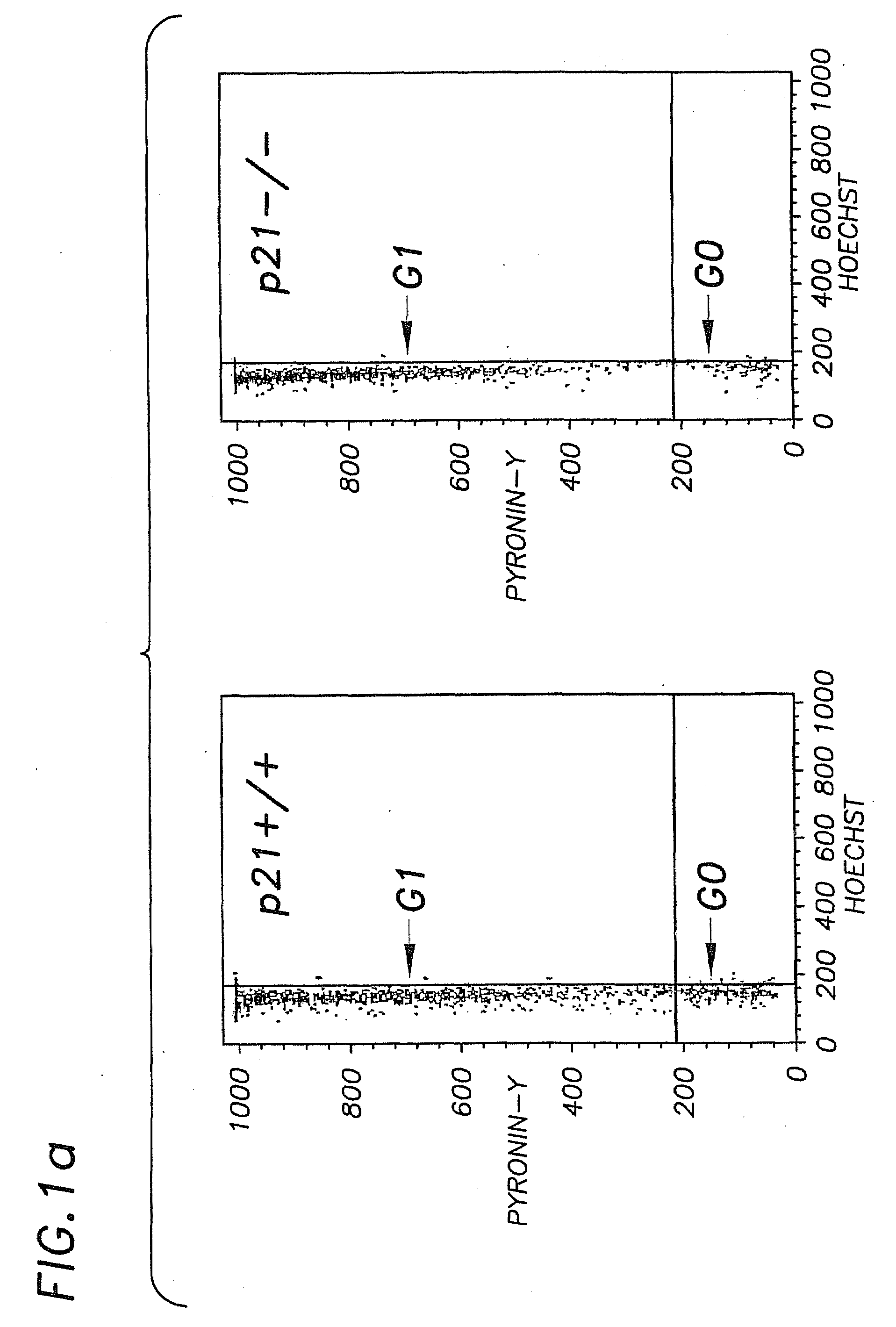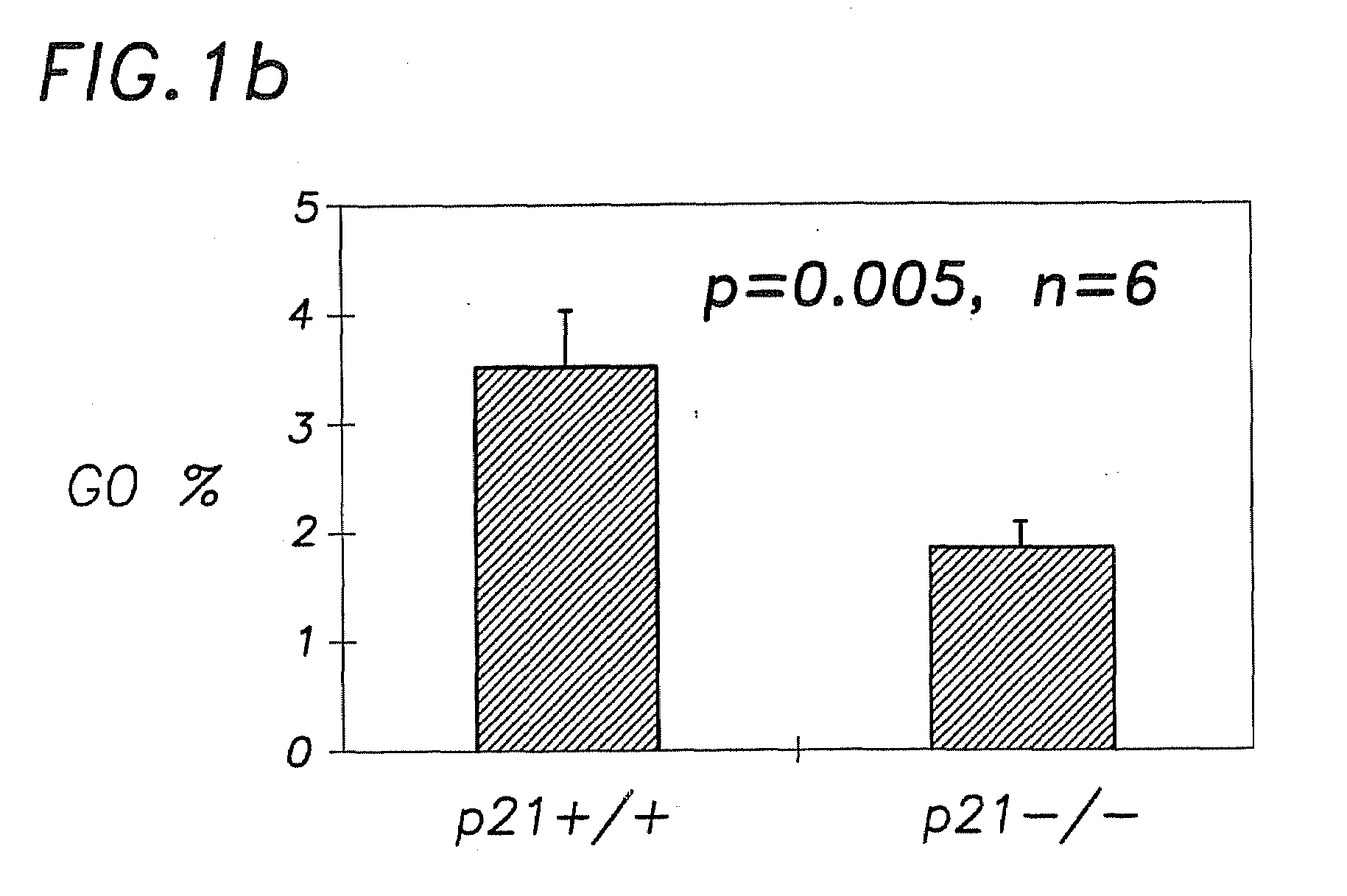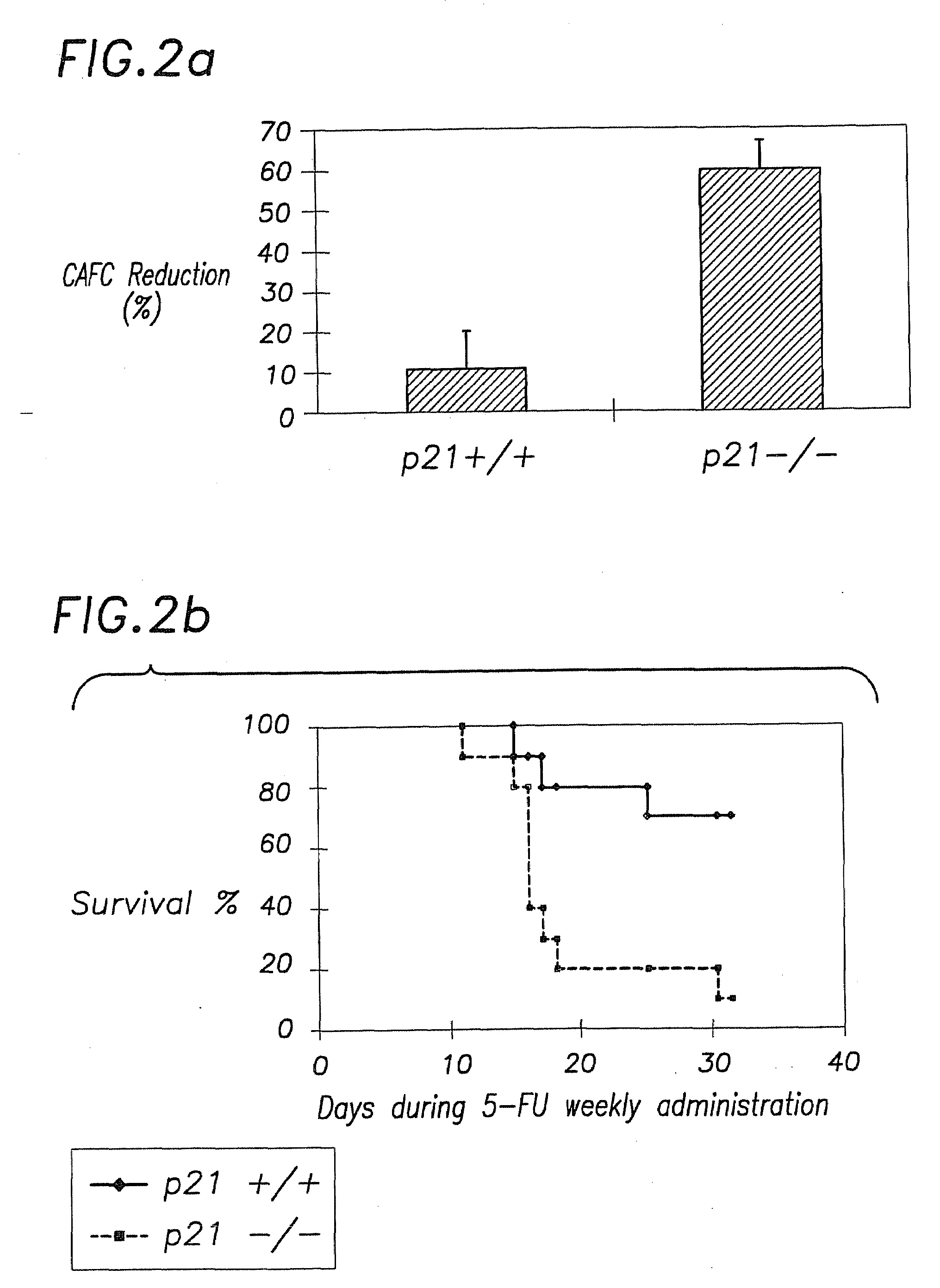P27 and p21 in gene therapies
a gene therapy and gene therapy technology, applied in the field of p27 and p21 in gene therapy, can solve the problems of cytokines with pleiotropic effects, stem cell expansion without loss of multipotentiality, and expanded cell numbers, so as to reduce the amount of p27 and/or p21 within the cell, and the effect of expanding the population of cells
- Summary
- Abstract
- Description
- Claims
- Application Information
AI Technical Summary
Benefits of technology
Problems solved by technology
Method used
Image
Examples
example 1
Hematopoietic Stem Cell Quiescence In Vivo is Maintained by p21cip1 / waf1 and is Critical for Preventing Premature Exhaustion of Hematopoiesis
Methods
[0068]Generation of homozygous mice. Heterozygote 129 / SV p21 + / − mice (Brugarolas et al. Nature 377:552-7, 1995; incorporated herein by reference) were obtained from the laboratory of Tyler Jacks (MIT, Boston) under the permission of the Subcommittee on Research Animal Care of the Massachusetts General Hospital (MGH). The mice were housed in sterilized microisolator cages and received autoclaved food and drinking water at the MGH animal care facility. The inbred 129 / SV heterozygotes (+ / −) were bred to yield homozygous and wild-type offspring. The litter mates from the same + / − parents were used in each experiment.
[0069]Mouse genotyping. Genotyping was achieved by DNA PCR. Briefly, genomic DNA was isolated from tail biopsy and analyzed by amplification using three primers: p21 +116F (AAG CCT TGA TTC TGA TGT GGG C), p21 −135 (TGA CGA AGT C...
example 2
Molecular Boundary Between Stem and Progenitor Cells is Marked by Distinct CDKI Dominance
Methods
[0093]Generation of homozygous mice. Heterozygote 129 / B6 p27 + / − mice were obtained from the laboratory of Dr. Andrew Koff (Sloan Kettering Cancer Center, New York) under the permission of the Subcommittee on Research Animal Care of the Massachusetts General Hospital (MGH). Mice were housed in sterilized microisolator cages and received autoclaved food and drinking water at the Massachusetts General Hospital animal core facility. The heterozygotes (+ / −) were crossbacked into 129 / sv background and bred to yield homozygous and wild-type offspring. The little mates from the same + / − parents were used in each experiment.
[0094]Mouse genotyping. Genotyping was achieved by DNA PCR. Briefly, genomic DNA was isolated from tail biopsy and analyzed by amplification using three primers (the sequences were provided by Dr. Andrew Koff): SW40 (5′-TCA AAC GTG AGA GTG TCT AAC GG3′), SW41 (5′ ACG GGC TTA T...
example 3
Increased Numbers of Stem Cells Following Ex Vivo Treatment with p21 Anti-Sense
Materials and Methods
[0117]Cells and cell culture. Cells were obtained from umbilical cord blood after normal full-term deliveries, from bone marrow harvests of healthy adult volunteers and from mobilized peripheral blood of normal donors in accordance to procedures approved by the Institutional Review Board of the Massachusetts General Hospital. Samples were diluted in PBS and enriched for mononuclear cells by centrifugation on Ficoll / Paque. CD34+ were enriched by immunomagnetic selection in according to the manufacturer's instructions (Miltenyi Biotec, Bergisch-Gladbach, Germany) with a purity in the selected product always of 95%. CD34+38− cells were further enriched after staining with CD34-fluorescein isothiocyanate (FITC) and CD38-phycoerythrin (PE) (Becton Dickinson, San Jose, Calif.) by fluorescence-activated sorting (FACS Vantage, Becton Dickinson).
[0118]Human embryonic kidney derived 293T cells ...
PUM
| Property | Measurement | Unit |
|---|---|---|
| concentration | aaaaa | aaaaa |
| pharmaceutical composition | aaaaa | aaaaa |
| physiologic stress | aaaaa | aaaaa |
Abstract
Description
Claims
Application Information
 Login to View More
Login to View More - R&D
- Intellectual Property
- Life Sciences
- Materials
- Tech Scout
- Unparalleled Data Quality
- Higher Quality Content
- 60% Fewer Hallucinations
Browse by: Latest US Patents, China's latest patents, Technical Efficacy Thesaurus, Application Domain, Technology Topic, Popular Technical Reports.
© 2025 PatSnap. All rights reserved.Legal|Privacy policy|Modern Slavery Act Transparency Statement|Sitemap|About US| Contact US: help@patsnap.com



